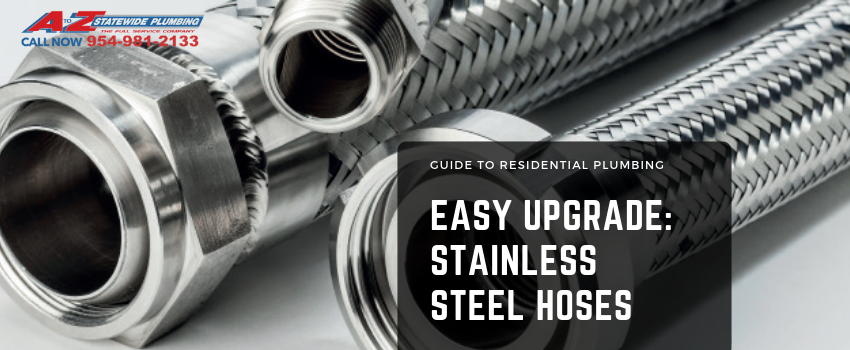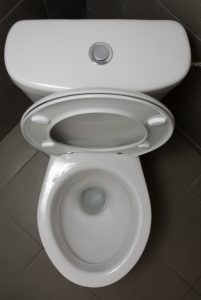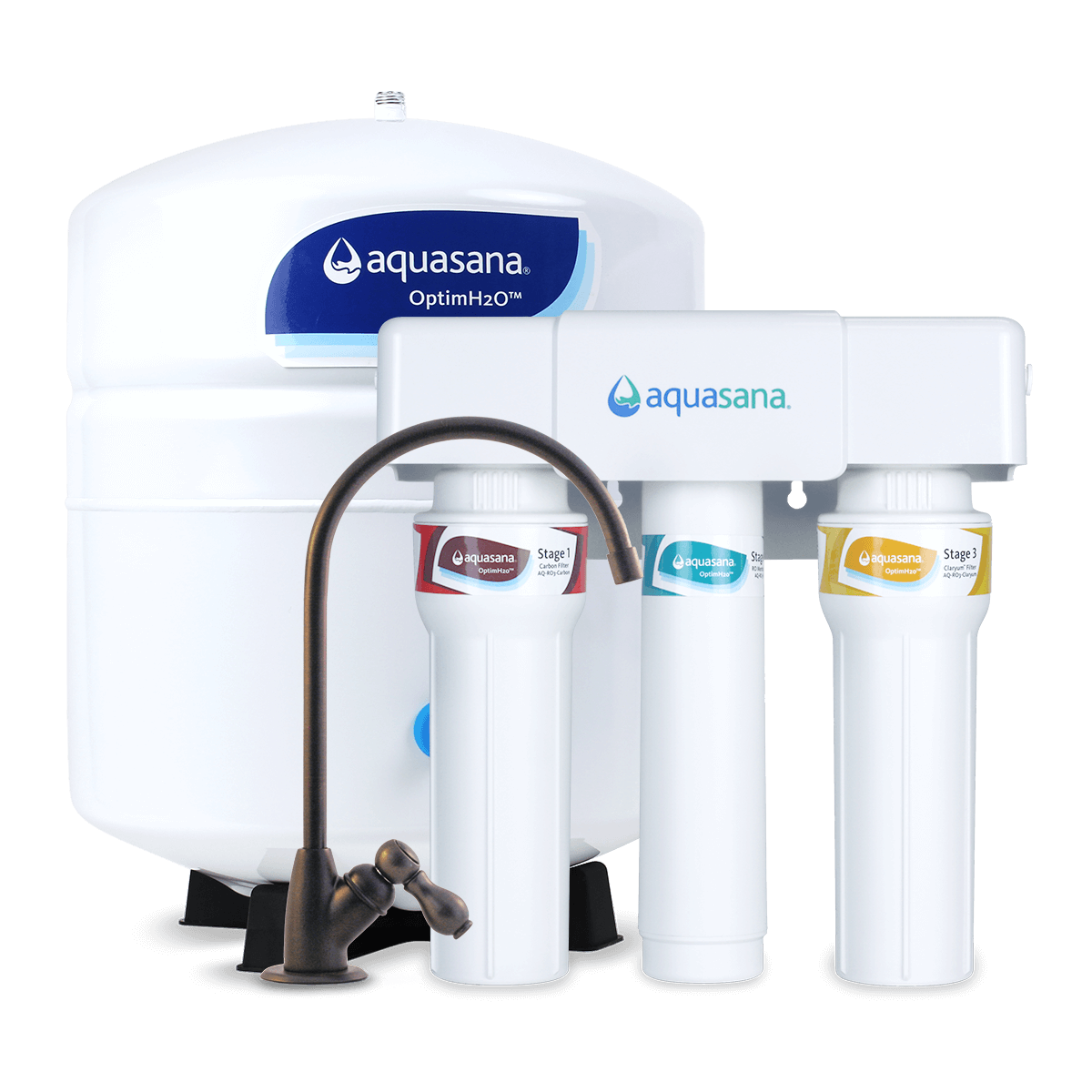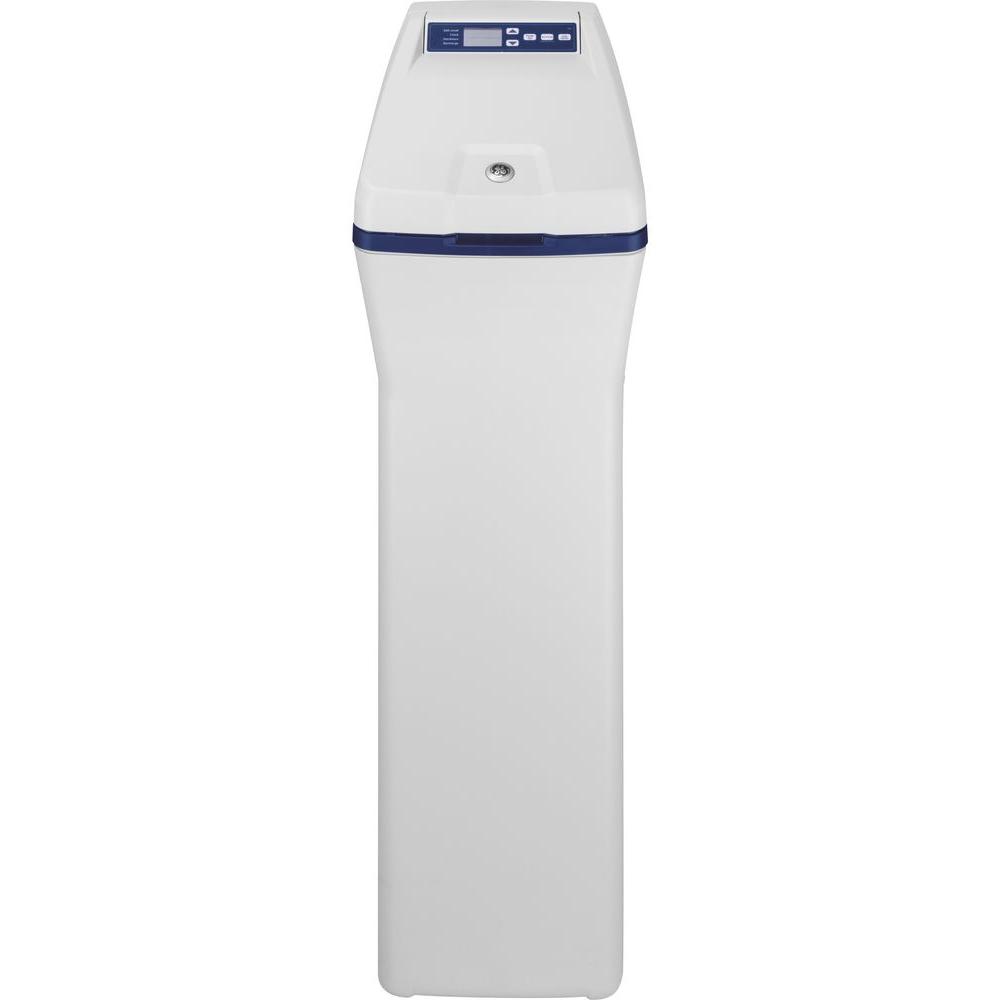Everything You Need to Know About Plumbing Traps
We are a participant in the Amazon Services LLC Associates Program, an affiliate advertising program designed to provide a means for us to earn fees by linking to Amazon.com and affiliated sites.
If you decide to take on a plumbing project, you’re bound to hear about plumbing traps. Plumbers talk about them all the time. Grease traps, p-traps, s-traps, drum traps, and more. But what the heck are they and what on Earth do they actually do anyway?
If you want to tackle a DIY project that involves plumbing, you definitely need to know the answers to these questions before you start. But we also want to make sure you understand what products to use, how to install them, and what other supplies you’ll need to successfully complete your mission.
We’ll make sure you know what plumbing traps actually do and what kinds are on the market today. In addition, we also want to make sure you know what traps you may want to steer clear of to save yourself a headache. Don’t let plumbing intimidate you. With the right information, you can be on your way to DIY success. And that’s exactly where we come in.
Let’s look at some tips and tricks that will make your life easier when you decide you’re ready to handle the plumbing projects around your house. As a bonus, here are a few of the best plumbing traps you can use.
Basics of Plumbing Traps
Sewage disposal systems produce some pretty nasty odors while others can even come to a point where they are considered dangerous. In order to protect us from these risks, a barrier is placed between the plumbing fixture and sewage waste system.
Sewage disposal systems start in the production phase of the shower, bathtub, or toilet. Then it enters the disposal stage, sending the sediment waste through a series of inline steps. This helps ensure waste doesn’t overflow.
Related Read: All Plumbing Terminology
Common Gases that Are Produced in a Sewage System
- Methane.
- Hydrogen Sulfide.
- Nitrogen.
- Carbon Monoxide.
Having said that, any plumbing fixture directly connected to the sanitary drainage system must be equipped with a water seal trap. That means every single plumbing fixture used to evacuate waste from a building should have its own plumbing trap.
Plumbing Trap Definition
By definition, a plumbing trap is a device that keeps a small amount of liquid every time the fixtures is used. The amount of retained liquid is called a trap seal. This trap seal prevents sewage system odors, gases, and vermin (mice, insects, etc.) from entering the living or workspace.
Trap seal is the maximum vertical depth of liquid that a trap will retain measured from the crown weir and the top of the dip of the trap. The most common of all plumbing traps is the p-trap. This is used with kitchen sinks, lavatories, and laundry sinks. Check out the diagram in Figure #1.

Figure #1 Tubular P-Trap
Plumbing Codes Restrictions
Most Plumbing Codes place restrictions on how a p-trap is used and manufactured. Here are some of those limitations, restrictions, and clarifications.
- No trap that must depend on moving parts to retain its seal can be used.
- No trap outlet can be larger than the fixture drain to which it is connected. The sizes of the trap outlet matter. Don’t be flexible with this. For instance, you can’t put a 1 1/2 inch p-trap on a fixture with an 11/4 inch drain.
- Fixture traps must be self-cleaning by nature. This means that with each use, it must be able to flush away unhindered by lint or hair.
- You must install a trap level in relation to its trap seal. If the trap isn’t level, it can be susceptible to back-siphonage. Check out the diagram in Figure #2.

Figure #2 – P-Trap Level and Not Level
- No plumbing fixture can be double trapped. This is best illustrated using a water closet as an example. Put simply, waste cannot discharge through the integral trap of a water closet and then go through a second trap. Check out the diagram in Figure #3.

Figure #3 Double Trapped Water Closet
- Most codes allow double bowl kitchen sinks, triple compartment sinks, and laundry sinks to be furnished with one p-trap connected by a continuous waste. The compartments must be next to one another. Each compartment cannot be spaced more than 30” inches apart center to center of the drains. Check out the diagram in Figure #4.

Figure #4 Two & Three Compartment Sink Spacing
- There is usually a maximum allowable vertical drop from the fixture outlet to the water seal. Why is that so? Because the further the liquid waste drops, the greater the velocity of the water.
The greater the velocity of the water rushing through the plumb fixture drain, the more likely the drain will siphon the trap seal. The vertical drop for sinks, lavatories, showers, and bathtubs is between 18” and 24” but not more than 24”. The shorter the vertical distance, the more efficient the trap functions. Check out the diagram in Figure #5.

Figure #5 Horizontal Distance of Tailpiece Drop
When a water closet has flushed, the velocity of wastewater removes the trap seal completely. The trap seal would remain compromised if the trap seal wasn’t restored by the refill tube on a tank-type toilet. Concealed traps used for bathtubs, showers, etc. cannot have integral cleanouts. Check out the diagram in Figure #6 to observe the v parts of a p-trap.

Figure #6 Important Part of a P-Trap
Explaining Deep Seal P-Traps
Deep seal traps have vertical depths of 4″ or more. They are used in a limited number of applications. There are some advantages to using deep seal traps. These benefits are specific to their respective application.
Advantage #1
A deep trap has a deeper seal with more liquid than others. Therefore, the seal doesn’t evaporate as quickly.
Application. Use a deep trap when you install a floor drain in a remote location. This can be a large warehouse. In these cases, the application needs very little water to reseal the trap.
Advantage #2
The deep seal trap has a much greater capacity for resealing. Because the trap is usually quite a bit larger than a traditional trap, it can handle a much greater flow of water. As a result, the trap is less likely to lose its seal because of the extra amount of water.
Application. Use a deep seal trap when a fixture or piece of equipment calls for an indirect waste connection. This can be a commercial ice maker, salad bar, or in some cases a triple pot sink.
Advantage #3
Thanks to its depth, a deep seal trap is less likely to lose its seal due to the backpressure or trap siphonage.
Application. There are instances where a fixture or trap cannot be properly vented. In cases such as these, a deep primer seal trap would be ideal. All of the aforementioned advantages apply here as well.
Deep Seal Traps Don’t Work for All Jobs
Here are a couple of reasons why deep seal traps are not the norm for all applications.
- The traps are deeper, therefore, larger and tougher to fit into confined spaces.
- Because of their increased depth and capacity, they are more resistant to flow from a standard fixture. Therefore, they impede drainage and make the fixture drain sluggishly.
Related Read: Plumbing Tools The Homeowner Would Use
What Are the Types of Plumbing Traps that Most Plumbing Codes Prohibit?

Figure #7 Commonly Prohibited Traps
The majority of plumbing codes agreed on avoiding certain types of plumbing traps. These are:
- Bell Traps.
- Running Traps.
- Crown Vented Traps.
- ¾ S Traps.
- Full S Traps.
- Drum Traps.
I think drum traps need a little bit more explanation. Codes don’t necessarily prohibit them. However, professionals simply choose not to use them in new construction anymore. Drum traps played their part when installing bathtubs and lavatories. A trap adapter is used in residential and commercial drain, waste, and vents systems.

Figure #8 Drum Trap
A drum trap is a circular metal barrel canister with an inlet near the bottom of the trap. The waste outlet is at the top with a removable cover.
Ideally, professionals install the drum trap in a place with easy access. This way, you can remove the cover to clean. Unfortunately, many drum traps we’ve encountered are behind a wall. In other cases, people have it hard to remove the cover which fused together by time. Therefore, when drum traps stop, they are extremely difficult to clear by rodding. That’s due to their inlet and outlet configuration.
Drum traps existed so that people could find jewelry or valuables if lost down the drain. The trap would catch and guard the ring or earring by sinking to the bottom. The likelihood that a valuable would flow into the waste opening at the top of the trap is highly unlikely. A sand trap also helps to separate sand and oxidized organics found in water supplies.
What Is a Building Trap?
Back in the day, before people used or understood system venting, vermin like rats or insects could move freely from building to building, house to house. Not to mention the sewer gas odor could be unbearable because of backpressure and trap siphonage. Health officials knew that this could pose a serious health risk, especially in heavily populated, wet, and dry areas.
Therefore, to combat the issues above a house, a building trap is required in each building. The building trap provided a secondary line of defense against the vermin and sewer gas. Most times, the building trap was a large diameter S-trap. Today, most codes do not require a building trap. In fact, in most cases, they are against code.

Figure #9 Typical Building Trap
Reasons Why Plumbing Trap Seals Break down
Trap Siphonage
Trap siphonage can look like a low negative pressure within the fixture drain. However, you can grasp this concept more easily by describing it through a simple visual image. Picture a large amount of wastewater hitting a waste stack at one time. As the wastewater goes by the other fixtures connected to the stack, it can pull the water from their respective trap seals.
Another scenario that could cause trap siphonage is a fixture using an S-trap. If the fixture is full and the wastewater is released, the water will rush through the trap, with the waste pipe carrying some of the trap water. What happens is that not enough liquid is left to form an adequate trap seal. A similar scenario can occur if people install a fixture on a long run of piping with no ventilation. If the water vacates a vent fixture into the trap, it could build up enough velocity to drain the trap.
Back Pressure
Above we’ve described instances when a trap is compromised by being pulled out of the trap. However, there are instances when water can blow of the trap into the fixture. Subsequently, the water enters the building. This can happen when a large amount of waste flows into the drainage system. The water will compress the air in front of it. If the fixture at the point of compression has no proper ventilation, it will blow out the trap.
One of the responsibilities of owning a home is maintenance. Often, you may not realize there is a maintenance problem until you see the damage. A leaking shower is not only a nuisance but can raise your water bill and result in costly repairs.
The shower leaks that you can see are the ones that you quickly notice and are easier to repair. The leaks you cannot see are the ones that are most problematic. Shower leaks behind walls can do internal damage long before you detect them.
Related Read: Shower Leaks Behind Wall: How to Fix Them in 7 Steps
Wind Effect
Have you ever been in your bathroom on a windy day and see the water level in the toilet bob up and down? The same action can compromise the traps in your home. The pressure or suction caused by the strong winds can cause the water to rise and fall into the trap. If the fluctuations are big enough, a small amount of trap seal may spill into the waste system. This incident is going to compromise the trap. As you can imagine, the seal is more susceptible to both backpressure and trap siphonage.
Evaporation
This is a very common occurrence especially in instances where a fixture or drain has a sporadic activity. The water in the trap then evaporates when not in use, at least once a week. Laundry room floor drains, remote floor drains, fixtures and all traps in a summer home are all more vulnerable. Under these circumstances, evaporation has a high chance of happening.
Capillary Action
This doesn’t happen often. However, if there is a constant issue with a fixture losing its trap seal, this is something you can rule out. I think an example will serve this concept better than a lengthy explanation.

Figure #10 Capillary Attraction
Maybe a cleaning person runs out of clean water while mopping a large public toilet room. They may not want to fill up the bucket again. The alternative is that they flush one of the water closets a few times to make sure the water is clean. They rise the mop off in the toilet. One of the strands of the mop dislodges and gets stuck inside the trap seal. The piece stretches to the fixture branch and into the waste system. The water from the trap will pick up the string and into the waste piping, draining the trap seal.
Minimum Drain Sizes For Plumbing Fixtures
So many people have asked about trap/drain sizing for fixtures we decided to give you at least a loose guide for each type of plumbing fixture. Please note, although these sizes are pretty universal they are still subject to local plumbing codes.
Toilet Drain Size – The universally accepted toilet drain size is 3″. Please note, closest flanges have a 4″ inlet and a 3″ outlet.
Shower Drain Size – The universally accepted shower drain size is 2″
Bathtub Drain Size – The universally accepted shower drain size is 1 1/2″. Please note this includes combination tub and shower fixtures.
Kitchen Sink Drain Size (Domestic) – The universally accepted kitchen sink drain size is 1 1/2″. Please note this size assumes there is no dishwasher or garbage disposal installed.
Bathroom Sink Drain Size (Lavatory Sink Drian Size) – The universally accepted bathroom sink drain size is 1 1/4″
Bathroom Sink Drain Size In Sets (If you have two lavatory sinks side by size) – The universally accepted bathroom sink drain size is 1 1/2″
Washing Machine Drain Size – The universally accepted washing machine drain size is 1 1/2″
Dishwasher Drain Hose Size – The universally accepted dishwasher drain size is 1 1/2″
Bidet Drain Size – The universally accepted bidet drain size is 1 1/4″.
Drinking Fountain Drain Size/Water Cooler Drain Size – The universally accepted drinking fountain/water cooler drain size is 1 1/4″.
Washfountain Drain Size (This depends on the discharge of the fixture) – The universally accepted wash fountain drain size is between 1 1/2″ and 2″
Urinal Drain Size – The universally accepted urinal drain size with an exposed trap is 1 1/2″ if the trap is integral to the fixture the trap drain size is 2″
Laundry Tub Drain Size – The universally accepted laundry tub drain size is 1 1/2″
Bar sink Drain Size – The universally accepted bar sink drain size is 1 1/2″
Related Read: How To Properly Vent Your Pipes: Plumbing Vent Diagram
Final Word on Plumbing Traps
Now that the plumbing traps are no longer a secret of the trade to you, you will be able to understand your system better and visualize how it truly works. You can now choose the right type of device for your home and make sure you leave no loopholes for a breakdown.
If you have any tips or tricks regarding plumbing traps, share them in the comment section below. You’ll provide additional insight to our readers and maybe even save someone from a plumbing disaster.
Last update on 2021-04-30 at 08:13 / Affiliate links / Images from Amazon Product Advertising API
This post first appeared on http://www.theplumbinginfo.com











 Homeowners don’t often think of “preventive plumbing” for their homes. Usually, the only major planning people do for their plumbing is to avoid pipe freeze during winter. That’s not something we need to worry about here in Arizona. But there are several preventive measures you can take to stop problems, large and small, in the future. We’ll go over six of them below.
Homeowners don’t often think of “preventive plumbing” for their homes. Usually, the only major planning people do for their plumbing is to avoid pipe freeze during winter. That’s not something we need to worry about here in Arizona. But there are several preventive measures you can take to stop problems, large and small, in the future. We’ll go over six of them below.

 It’s time for spring cleaning! Get out the vacuum, the duster, the cleaning supplies, and take on the large projects you’ve been waiting all winter to start. Spring cleaning can be a great reason to spur the family into making their home feel like a sanctuary, and we’re all for it! That being said, you can’t clean everything with a pair of gloves, cleaning spray, and some paper towels.
It’s time for spring cleaning! Get out the vacuum, the duster, the cleaning supplies, and take on the large projects you’ve been waiting all winter to start. Spring cleaning can be a great reason to spur the family into making their home feel like a sanctuary, and we’re all for it! That being said, you can’t clean everything with a pair of gloves, cleaning spray, and some paper towels. You go to flush your toilet and it flushes just fine… but then it flushes again. You noticed this happening a while ago and you thought it was odd, but you brushed it off because it seemed harmless. Now it’s been going on for a while and it’s creating a distinctive pit in your stomach every time it happens. You know this is a problem waiting to happen. Now, you might want to ask yourself the question: “What should I do?”
You go to flush your toilet and it flushes just fine… but then it flushes again. You noticed this happening a while ago and you thought it was odd, but you brushed it off because it seemed harmless. Now it’s been going on for a while and it’s creating a distinctive pit in your stomach every time it happens. You know this is a problem waiting to happen. Now, you might want to ask yourself the question: “What should I do?”








